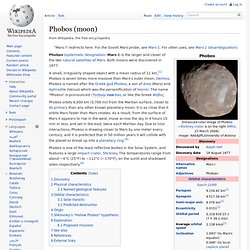

Saturn. Mercury (planet) First planet from the Sun in the Solar System Name and symbol Physical characteristics Internal structure Mercury's internal structure and magnetic field Surface geology MASCS spectrum scan of Mercury's surface by MESSENGER Impact basins and craters Enhanced-color image of Munch, Sander and Poe craters amid volcanic plains (orange) near Caloris Basin Overhead view of Caloris Basin Perspective view of Caloris Basin – high (red); low (blue) Tolstoj basin is along the bottom of this image of Mercury's limb Plains Compressional features Volcanism Surface conditions and exosphere Magnetic field and magnetosphere Graph showing relative strength of Mercury's magnetic field Orbit, rotation, and longitude Orbit of Mercury (2006) Animation of Mercury's and Earth's revolution around the Sun Longitude convention Spin-orbit resonance After one orbit, Mercury has rotated 1.5 times, so after two complete orbits the same hemisphere is again illuminated.

Advance of perihelion Habitability Observation Observation history See also. Phobos (moon) Phobos (systematic designation: Mars I) is the larger and closer of the two natural satellites of Mars.

Both moons were discovered in 1877. Phobos has dimensions of 27 × 22 × 18 km,[1] and is too small to be rounded under its own gravity. Its surface area is slightly less than the land area of Delaware. Phobos does not have an atmosphere due to low mass and low gravity.[10] It is one of the least reflective bodies in the Solar System. Spectroscopically it appears to be similar to the D-type asteroids,[11] and is apparently of composition similar to carbonaceous chondrite material.[12] Phobos's density is too low to be solid rock, and it is known to have significant porosity.[13][14][15] These results led to the suggestion that Phobos might contain a substantial reservoir of ice.
The unique Kaidun meteorite is thought to be a piece of Phobos, but this has been difficult to verify since little is known about the detailed composition of the moon.[25][26] Jupiter. Structure Jupiter is composed primarily of gaseous and liquid matter.

It is the largest of four gas giants as well as the largest planet in the Solar System with a diameter of 142,984 km (88,846 mi) at its equator. The density of Jupiter, 1.326 g/cm3, is the second highest of the gas giants, but lower than for any of the four terrestrial planets. Composition Jupiter's upper atmosphere is composed of about 88–92% hydrogen and 8–12% helium by percent volume or fraction of gas molecules.
Based on spectroscopy, Saturn is thought to be similar in composition to Jupiter, but the other gas giants Uranus and Neptune have relatively much less hydrogen and helium.[21] Because of the lack of atmospheric entry probes, high-quality abundance numbers of the heavier elements are lacking for the outer planets beyond Jupiter. Mass Jupiter's diameter is one order of magnitude smaller (×0.10045) than the Sun, and one order of magnitude larger (×10.9733) than the Earth. Internal structure Atmosphere Cloud layers.